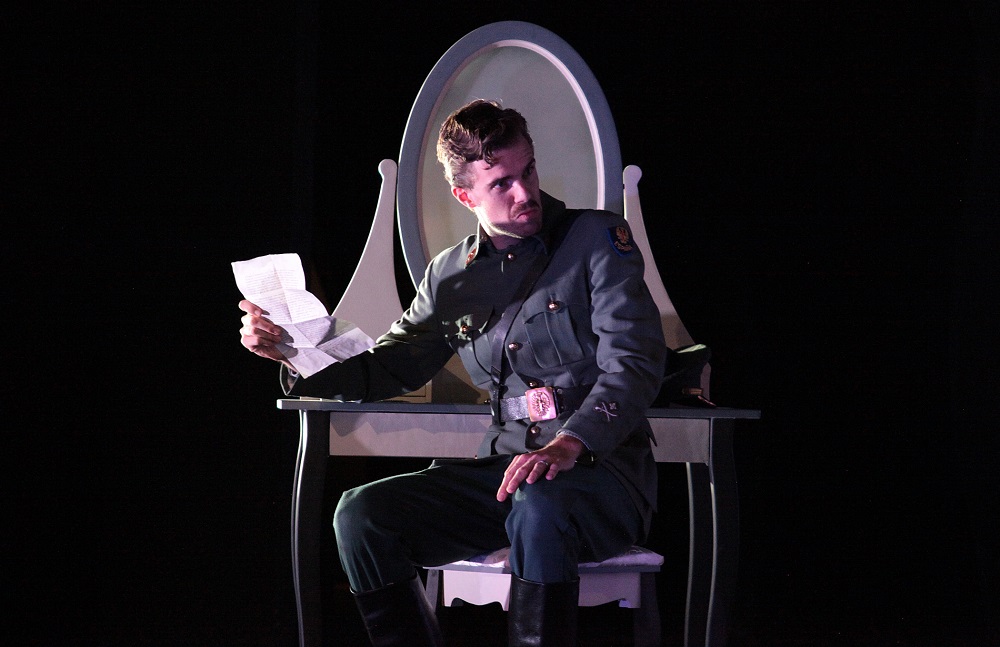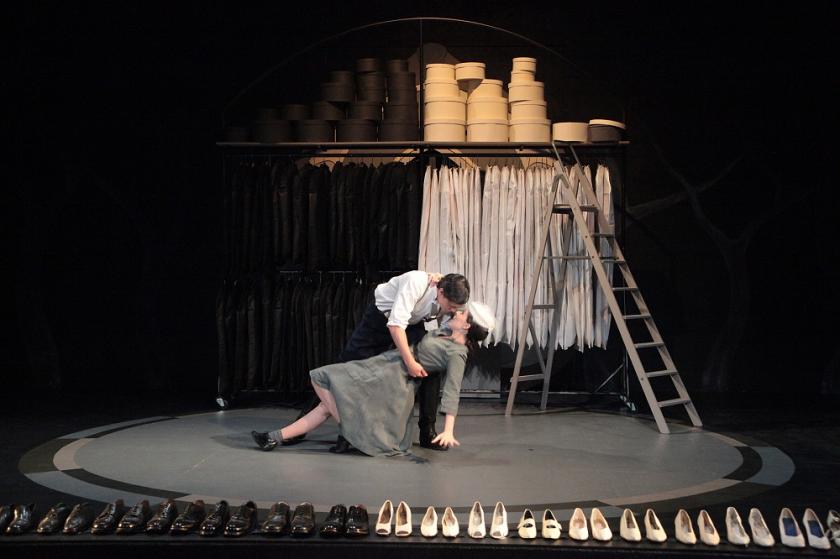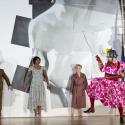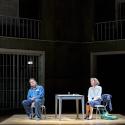Clonter Opera is a finishing school for young opera performers, with its own well appointed theatre and professional administration and artistic direction, based on a farm in Cheshire near Jodrell Bank. It’s seen a succession of promising young post-conservatoire singers come to perform in fully staged productions for many years, and is also (from an audience point of view) the only countryside summer opera venue of any substance in the north of England. It even manages to accommodate the entire house capacity with proper, covered eating facilities under its roof – appropriate to the local weather and in that respect outdoing Glyndebourne.
The fun of seeing a Clonter show lies mainly in spotting those among its casts who may turn out to be star names of the future, but in recent years its production and musical standards have been raised ever higher, with Clive Timms at the musical helm (conducting the reduced-score Clonter Sinfonia) and Robin Humphreys assisting, alongside some talented directors. Their intensive work over two weeks can bring remarkable results.
Such is the case with Mozart's The Marriage of Figaro . Director Stephen Medcalf – who has created imaginative and telling productions for Opera North and Buxton Festival, among others – sets it in Spain (where else?), but in the 20th century: the fascist period, actually. That gives him and designer Nate Gibson the chance to pay homage to Dali and Gaudi in the setting (though in a minimalist way) and to put Count Almaviva into army uniform and make him a seriously sinister character, while Figaro is apparently his chauffeur as well as factotum. If I hadn’t read the programme note, I might have thought it was a variation on the later episodes of Downton Abbey, but then I suppose the charmless aristocracy and their households were much the same all over Europe in the thirties.

Clive Timms urges the music along with impeccable timing and precision, ever attentive but with a team of principals who clearly know their stuff and hardly need his prompting. The ensembles were very fine indeed, in balance and impact. Margo Arsane (Susanna) and Henry Neill (Figaro) stood out from the opening scene. She’s just graduated from the Guildhall (and before that Lyon and Munich) and is a most accomplished performer, acting and reacting to the story all the time, and her soprano is pure and clear, with power available but never over-used. He is a product of the Royal Academy opera school and a gifted actor-singer with a well developed tone and bags of energy and charm. "Se vuol ballare" set the pace, and he never looked back.
The others have much to offer, too: Josep-Ramon Olivé as Almaviva (pictured above), another Guildhall product, has confidence and stage presence, Andrew Irwin (Chetham’s and the Royal Welsh College) brings a burnished tone and a fine comic gift as both Basilio and Curzio, while Angharad Lyddon (Royal Academy) as Cherubino sings "Voi che sapete" delightfully and has mastered the art, and walk, of being a girl playing a boy who at times is pretending to be a girl.
Elizabeth Skinner (Guildhall) is the Countess – she brings a lovely mature sound to her role; Eugene Dillon-Hooper (RNCM) is an imperious but believable Dr Bartolo, with Jade Moffat (Guidhall) a finely sung Marcellina. There were good contributions from Edward Robinson (RNCM) as Antonio and Corinne Cowling (Guildhall) as Barbarina, completing an impressive cast list. Of course you get no chorus in a Clonter production, but the team did their best to make up for that.















Add comment